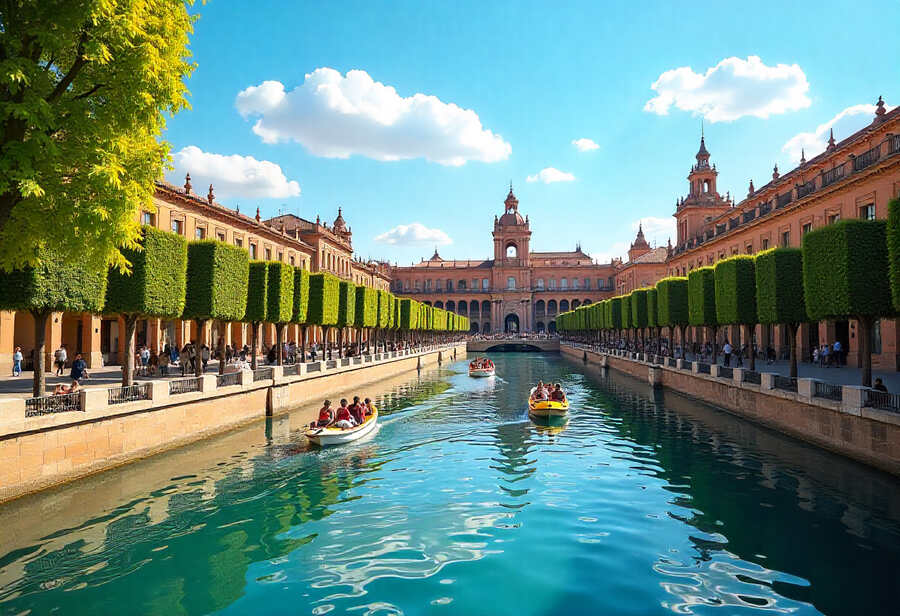Home » TOURISM NEWS » Spain Uses Smart Digital Solutions In Girona To Collect Anonymous Visitor Data, Aiming To Improve Urban Management And Protect Popular Historical Sites
Published on
August 9, 2025 |
Spain is leveraging advanced smart digital solutions in the city of Girona to anonymously collect visitor data, with the primary goal of enhancing urban management and safeguarding its cherished historical sites. By gathering real-time insights into tourist movement patterns without compromising individual privacy, authorities can better control overcrowding, optimize infrastructure, and implement targeted preservation efforts—ensuring that Girona’s cultural heritage is protected while improving the overall visitor experience.
A popular destination in northern Spain has taken a significant step to manage its tourism flow by introducing an innovative system that tracks visitor numbers in real time. The town has deployed a comprehensive network of sensors that detect mobile phone signals, allowing authorities to monitor how many tourists enter and move through key areas. This new technology aims to improve visitor management, protect local heritage sites, and enhance the overall experience for travelers.
The town in focus, Girona, lies in the Catalonia region and attracts visitors for its rich history, stunning medieval architecture, and charming narrow streets. To better understand and control tourist traffic, the local government installed nine sensor devices throughout Barri Vell, the town’s oldest and most visited district. Barri Vell, meaning “Old Quarter,” is renowned for its cobblestone lanes, ancient walls, and picturesque squares. These sensors serve two main purposes: counting how many visitors enter the area and mapping their movements throughout the district.
Each sensor captures signals from mobile phones passing by, anonymously tracking the number of devices without storing personal data. By gathering this information, authorities can analyze patterns such as peak visitation times, popular routes within the district, and how long tourists spend in various spots. This data provides valuable insights that local planners can use to prevent overcrowding, improve infrastructure, and preserve Girona’s historic fabric.
Girona has long been a magnet for travelers drawn by its cultural heritage and atmospheric setting. The town’s medieval core remains remarkably intact, offering visitors a step back in time with its stone buildings, narrow alleyways, and ancient fortifications. The presence of this new monitoring system reflects a growing trend among heritage sites worldwide to use technology in managing tourism sustainably. By understanding visitor flows in detail, Girona’s officials can strike a balance between welcoming tourists and safeguarding the town’s unique character.
The sensors’ deployment forms part of a broader strategy to address challenges posed by rising visitor numbers. Over the past decade, Girona has seen an increase in tourism driven by its historical significance and media exposure. The town served as a backdrop for several scenes in a globally popular television series, which further boosted its profile. This surge in visitors has made it crucial to implement effective management tools that minimize the impact on residents and cultural sites.
Monitoring visitor movement also allows authorities to plan improvements in public services and amenities. For instance, understanding which streets experience the most foot traffic helps direct cleaning efforts, crowd control measures, and signage. It also guides decisions about where to place information points, seating, or additional lighting to enhance safety and comfort. As a result, both tourists and locals benefit from a better-organized urban environment.
The real-time nature of the data collected enables quick responses to potential issues. If sensors detect an unusually high concentration of visitors in a specific area, officials can take immediate action to ease congestion, such as redirecting pedestrian flow or temporarily limiting access. This proactive approach reduces the risk of damage to fragile historical sites caused by overcrowding and preserves the quality of the visitor experience.
Beyond managing the current influx, the data gathered will support long-term tourism planning. Authorities can use trends to forecast future demand and invest in sustainable infrastructure accordingly. By analyzing seasonal patterns and visitor behavior, Girona can develop targeted campaigns to distribute tourism more evenly throughout the year and across different neighborhoods, preventing pressure on Barri Vell alone.
This technological approach also aligns with Girona’s commitment to smart city initiatives. The town has increasingly embraced digital solutions to improve urban management, environmental sustainability, and resident quality of life. Installing sensors in Barri Vell complements other measures such as enhanced public transport options and pedestrian-friendly streets, all aimed at creating a harmonious balance between tourism and everyday life.
Local businesses stand to gain from this system as well. By understanding visitor flows, shop owners and service providers can adjust opening hours, staffing levels, and marketing strategies to better meet demand. Additionally, knowing the busiest times helps in planning events and promotions that attract visitors during quieter periods, spreading economic benefits more evenly.
The privacy of visitors remains a top priority in this initiative. The sensors only detect anonymous mobile signals and do not collect personal information or track individual identities. This method respects privacy laws and avoids intrusive surveillance while still providing accurate data for tourism management.
Girona’s experience offers a valuable example for other towns and cities facing similar challenges. As tourism rebounds globally, many historic destinations struggle to balance economic benefits with preservation needs. Implementing advanced monitoring technologies provides a practical solution to understanding visitor behavior and responding effectively.
Spain is using smart digital tools in Girona to anonymously track visitor flows, helping manage urban challenges and protect historic sites from overcrowding and damage. This data-driven approach ensures better preservation and a smoother visitor experience.
In summary, Girona’s deployment of sensor technology in Barri Vell marks a forward-thinking move toward sustainable tourism management. By accurately tracking visitor numbers and movements, the town can protect its heritage, improve services, and enhance the experience for both tourists and residents. This approach represents a model for historic destinations seeking to harness technology to preserve their cultural treasures while welcoming the world.
